From EACB Shilling to Kenya Shilling
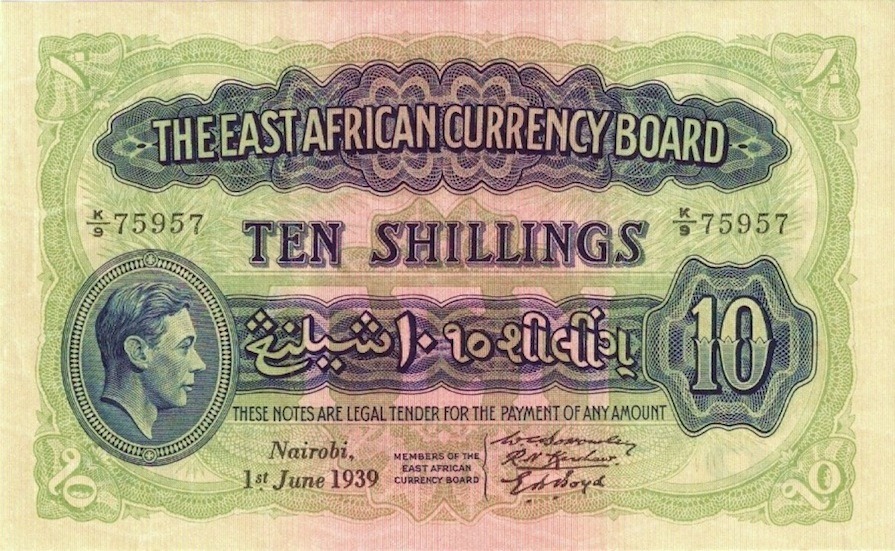
EA Shilling George VII
In the early 1920s, the British East Africa Protectorate was annexed as the Colony of Kenya and the Shilling became the legal tender of the area. The coins of then, made from silver, had the face of King George V’s engraved on one side and on the other side a lion and the depiction of a landscape with a mountain (presumably Mount Kenya). Following the end of the Second World War, the same predicament of the previous war was faced; the cost of silver had increased. This had a direct implication on the production of coins and the solution was an immediate introduction of more notes. Denominations available were in 1, 5, 10, 20, 50, 100, 1000 and 10000 Shilling notes. All notes had dates in which they were printed, the face of the monarchy, the note amount and The East African Currency Board. Coins were still available, though made from cupro-nickel.
In 1946 India attained independence and the Asian country’s self rule was reflected in the removal of the Latin words ‘Emperor of India’ on the Shilling. Four years later, following the death of King George V, and the succession of King George VI, one Shilling nickel coins were distributed with the face of the new King engraved on them.
Early in 1952, King George VI’s daughter, Princess Elizabeth, was on an East Africa excursion with her husband. Nyeri was among the places she visited in Kenya, staying at the Treetops Lodge in Nyeri. The lodge, built in 1932, was a leisure stop-over, situated along the path of the ancient Elephant migratory route – between the Aberdare Ranges and Mount Kenya National Park. While here, the Princess received news of her father passing away and as custom, she acceded to the throne. Indeed, this is considered an important time in history, and Kenya is remembered as the place where a woman came as a Princess and left as a Queen. In the usual monarchy steps, new currencies were issued to reflect this event with the Queen’s face engraved on the new coins and notes. Unlike previously, the new notes no longer included the word ‘Pound’. The Shilling was slowly becoming independent from the British Pound.
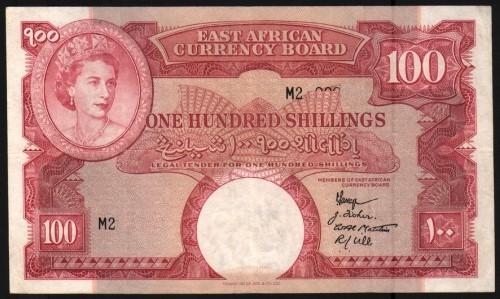
Queen Elizabeth note
The dawn of the sixties was memorable for the East African territories. Tanganyika gained her independence in 1961, Uganda followed the next year and Kenya in 1963. For this reason, the EACB ceased to issue notes with the monarch’s image. Queen Elizabeth’s name was also removed from the coins and instead the currency showed a dhow on Lake Victoria. This gave rise to the term ‘Lake Issue Currency’. The new notes were in denominations of 5, 10, 20 and 100 Shillings and for the first time, Kiswahili was featured on the notes. The Lake Issue Currency, however, hardly lasted as the three independent countries decided to issue their own separate currencies and ours became the Kenya Shilling, printed and minted under the mandate given by the Central Bank of Kenya.
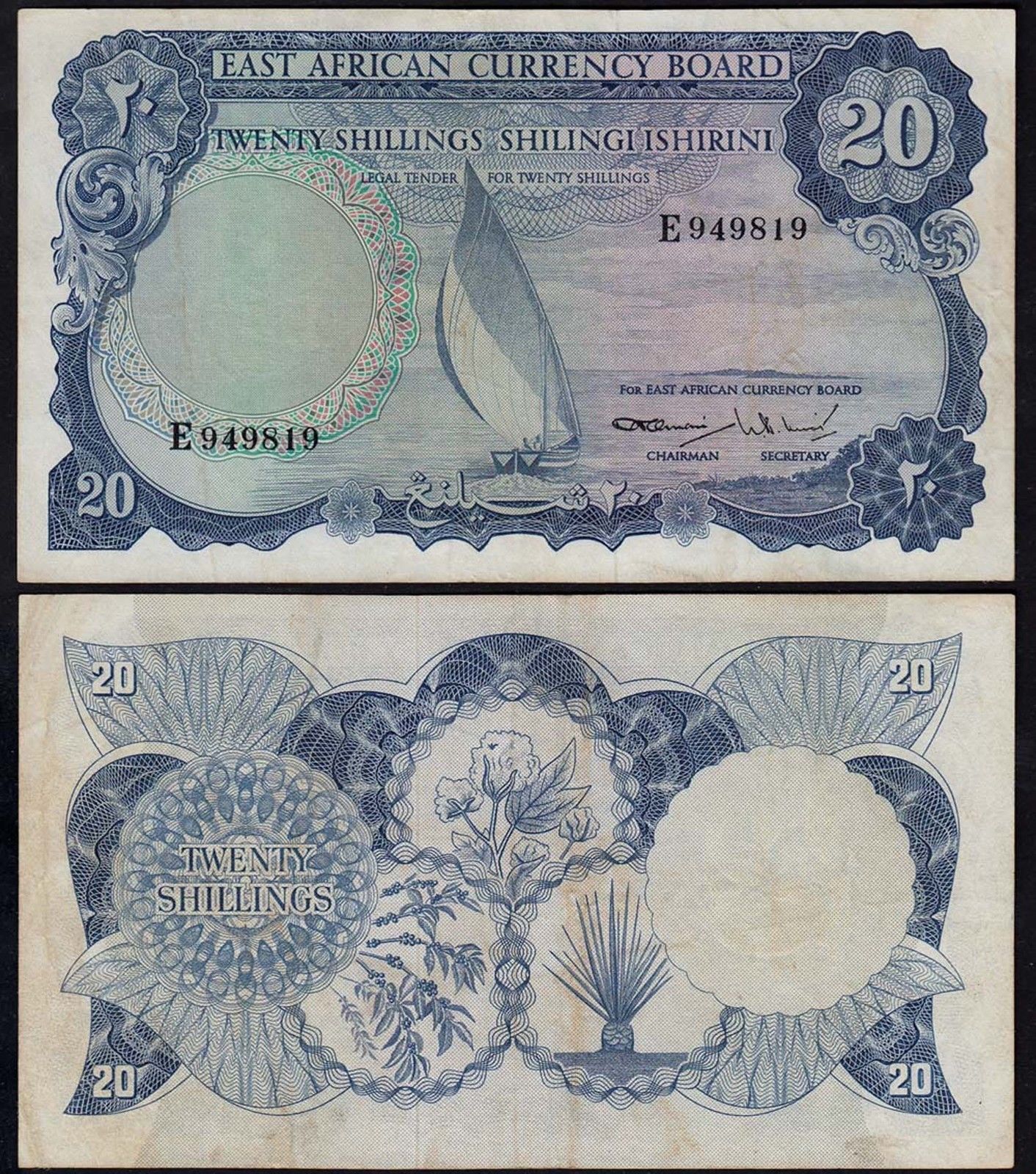
Lake Issue Currency

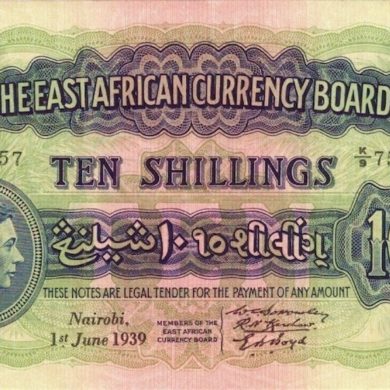
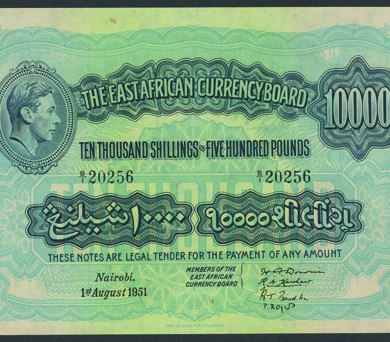



1 Comment
I do not know where you get all these gems of information about Kenya and esp about the history of money. You are truly remarkable.
I would like to raise two small issues. The Kenyan 10,000 note never became a reality. The farthest we got wat the sh 1,000 after the infamous Jirongo – sh 500. Some moneyed fellows actually wanted the 10,000 note but those of us who were economic activists resisted it and the note was never issued.
The Jirongoists wanted it necause carrying bundles of Sh 500 for bribes was becoming too “tiresome. Why not a single note for those transactions? The Zimbabweans had a million dollar note and I remember the day I became a millionaire in Harare. Then in Uganda and in Vietnam…
Too complex a subject but at least you have brought it out.
Talking of which, what do Kenyans think about our new money?
Aj